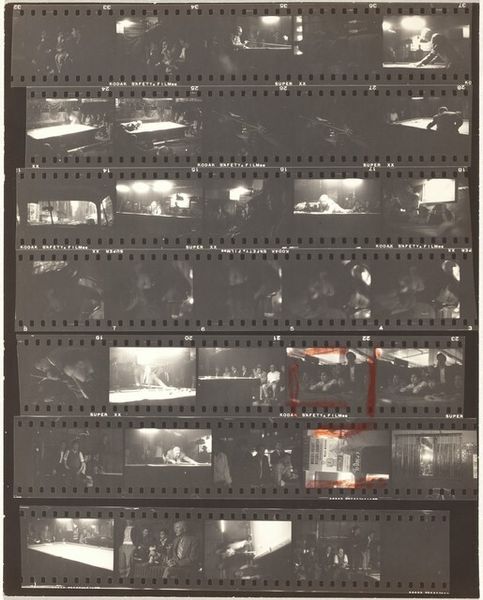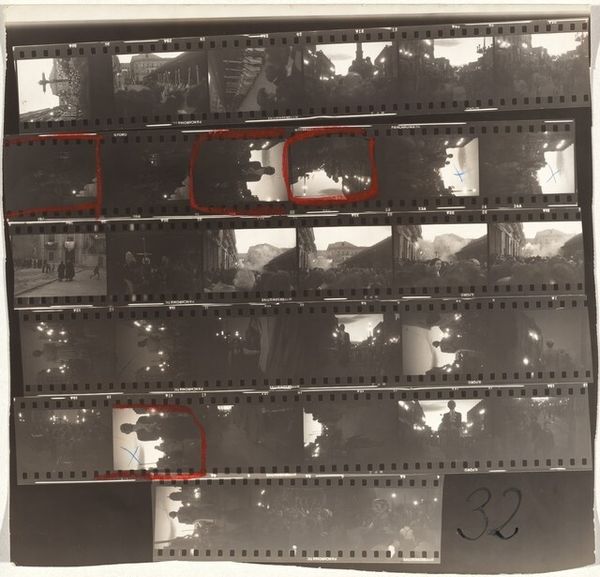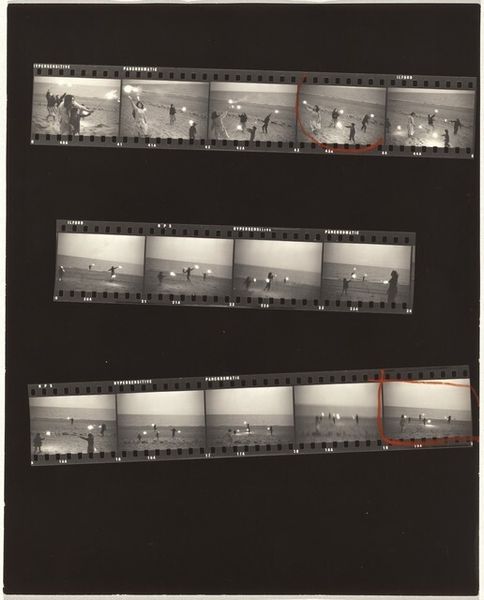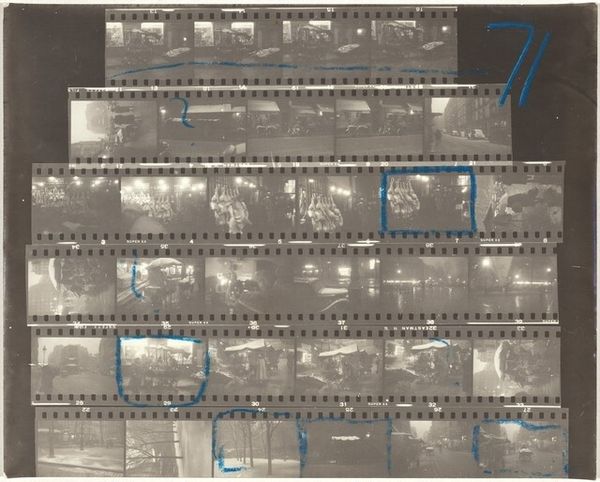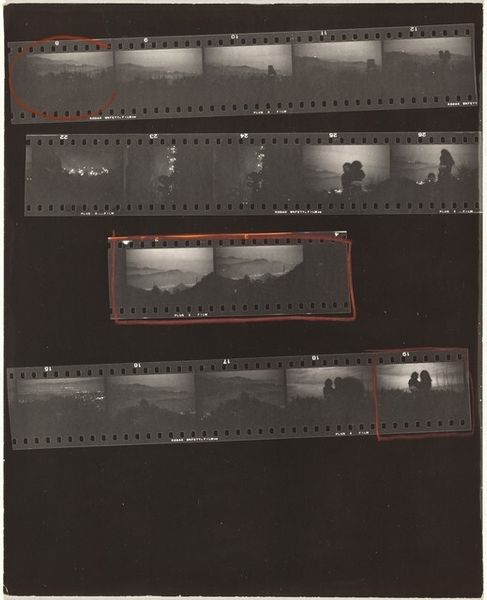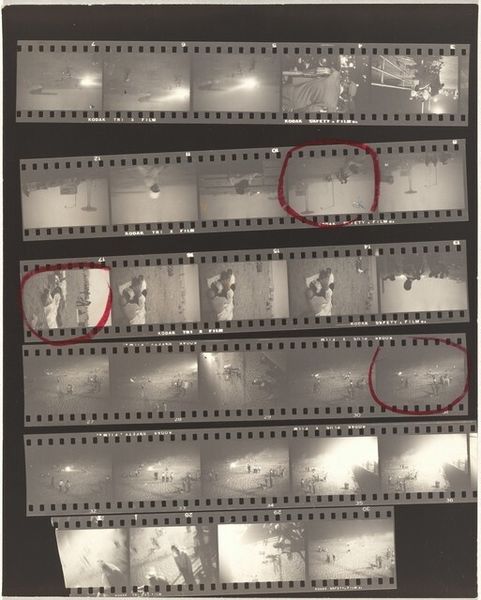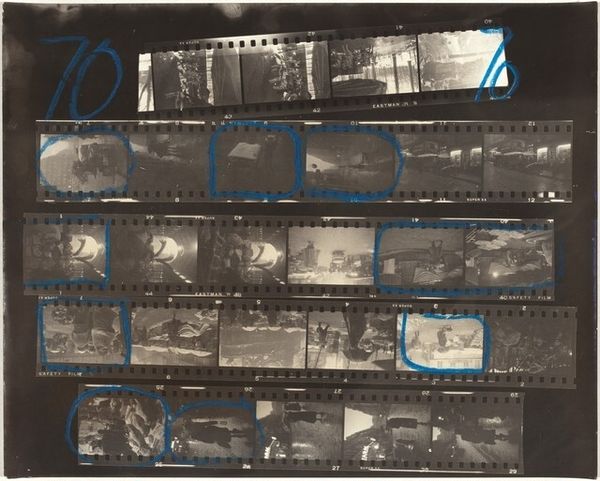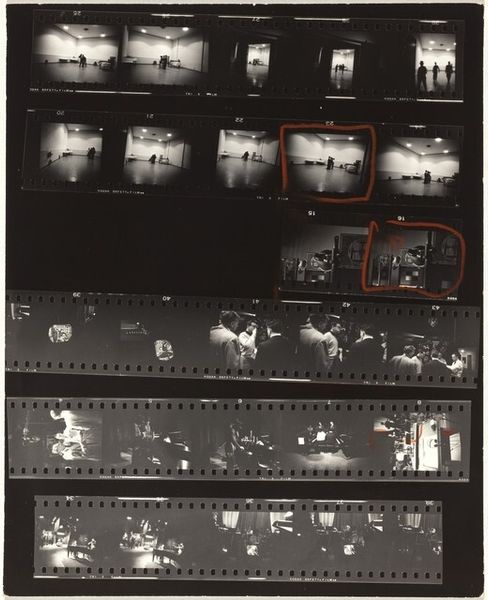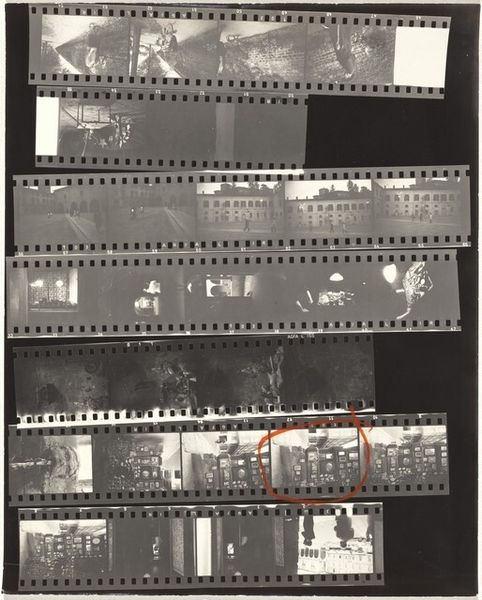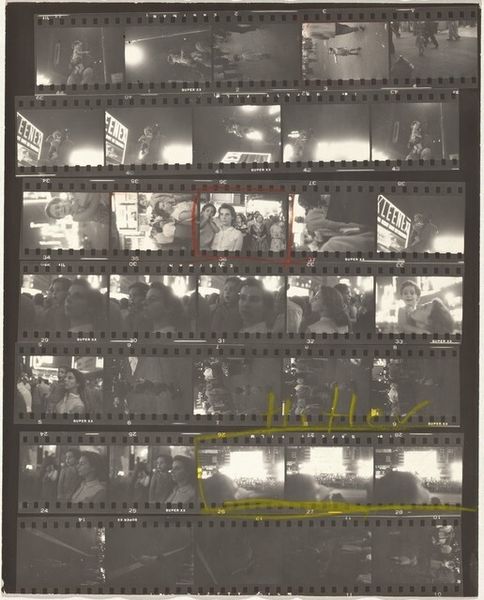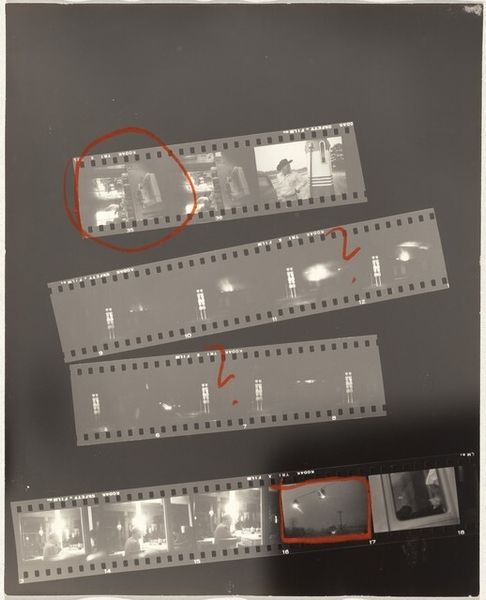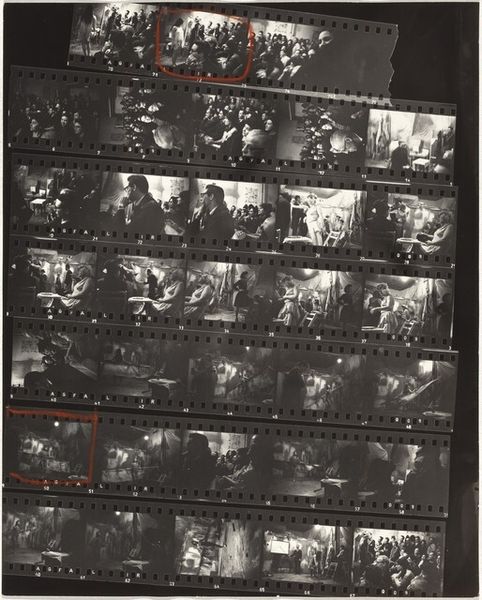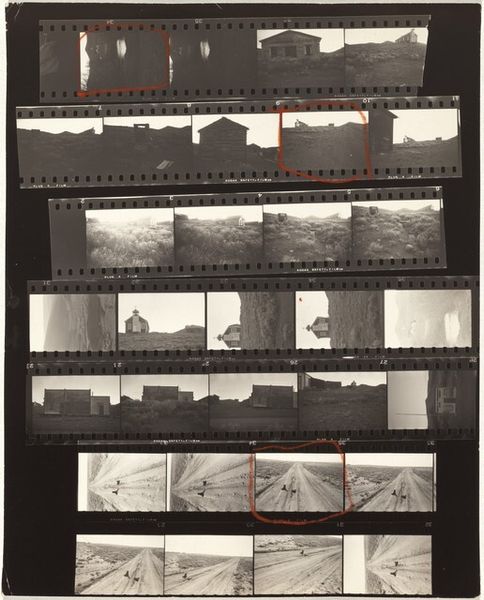
photography, gelatin-silver-print
#
still-life-photography
#
film photography
#
photography
#
gelatin-silver-print
#
pop-art
#
modernism
Dimensions: overall: 25.2 x 20.3 cm (9 15/16 x 8 in.)
Copyright: National Gallery of Art: CC0 1.0
Curator: Looking at this gelatin silver print, titled “Juke Boxes 2,” produced by Robert Frank in 1955… What grabs you first, visually? Editor: Immediately, it’s the rawness, the grainy texture. You can practically feel the cheap diner Formica and the smoky air. This isn't about high art, it feels grounded in the everyday. Curator: Absolutely. To me, Frank's approach feels so unburdened, like he’s simply capturing what unfolds. There’s such a refreshing, unrehearsed honesty to it all, almost like a melancholic haiku. Editor: Exactly. I think it's interesting to see how Frank plays with the industrial aesthetic – the juke box is so central, yet mass-produced. What kind of statements might he be trying to make about production, materials, labor, or maybe even consumption in the fifties? Curator: You know, I always feel such quiet stories in these photographs. The individual in that booth seems isolated, almost consumed by the sounds— lost in a personal reverie. What did music, and access to it through devices like jukeboxes, offer to folks then? Editor: Well, jukeboxes became a focal point for community. But it also was a symbol of the growing commodification of culture and leisure, if we are honest about it. What about the materials he uses to tell his own stories, however quietly. Look closely at the choices behind that gelatin silver print— the materiality itself adds another layer to how meaning is conveyed and understood. Curator: You know, seeing all these frames together kind of reminds me of old filmstrips. You almost imagine the narrative, not unlike one playing in a tune chosen on one of those jukeboxes. Editor: Yes, there are lots of interesting, and complex, cultural references here—and the photograph's artistic choices do amplify all of this. Thinking about its own materiality actually helps put it all into clearer context. Curator: I think ultimately that tension—the collision between industry, technology, and our longing for meaning—is something Robert Frank captures so well, leaving us with a glimpse of ourselves then and now. Editor: And maybe by reflecting on materials and production here we understand a little better about those lasting tensions you're mentioning, that jukebox selection, that image…how consumption becomes intertwined with what we're looking for when we're selecting music or viewing photography.
Comments
No comments
Be the first to comment and join the conversation on the ultimate creative platform.
